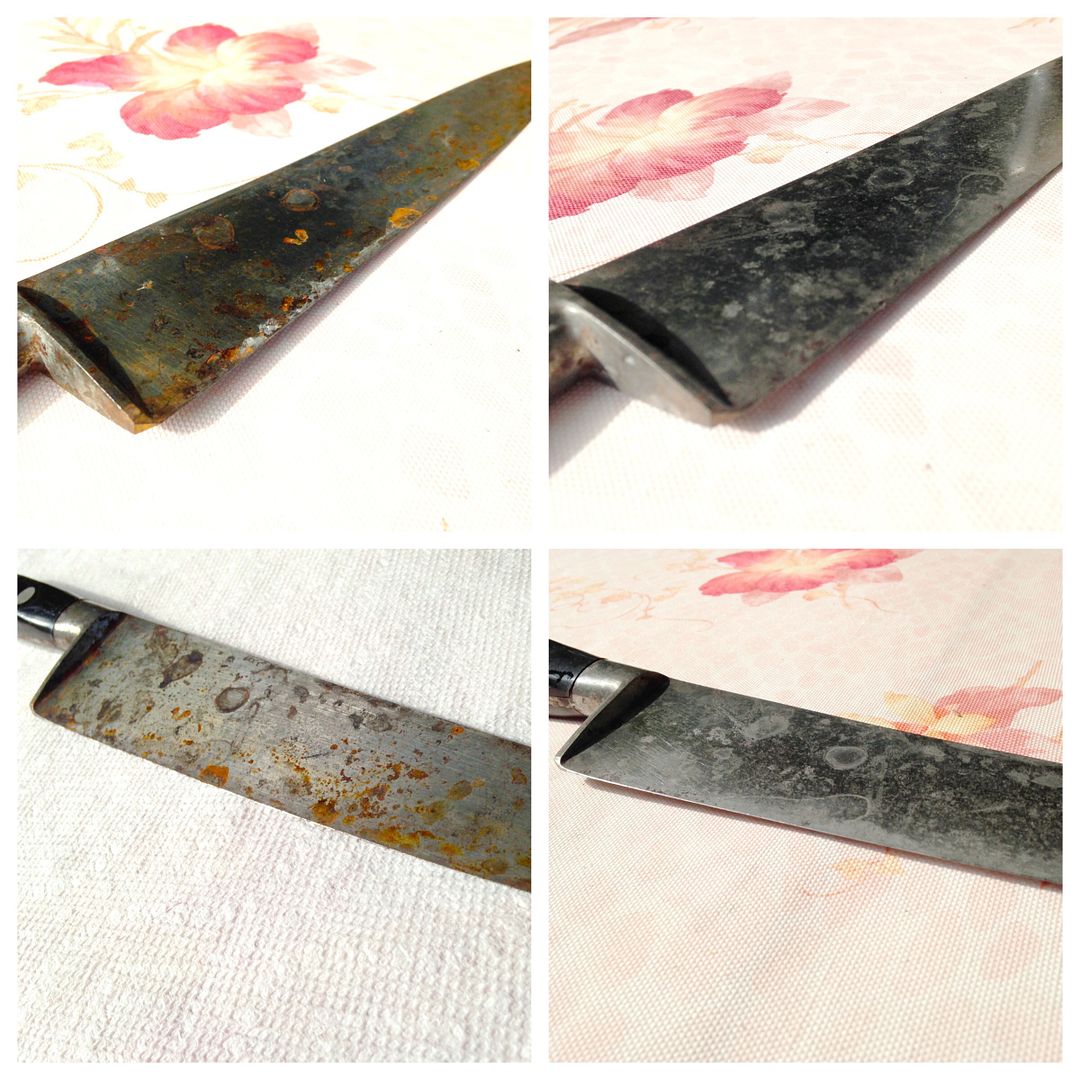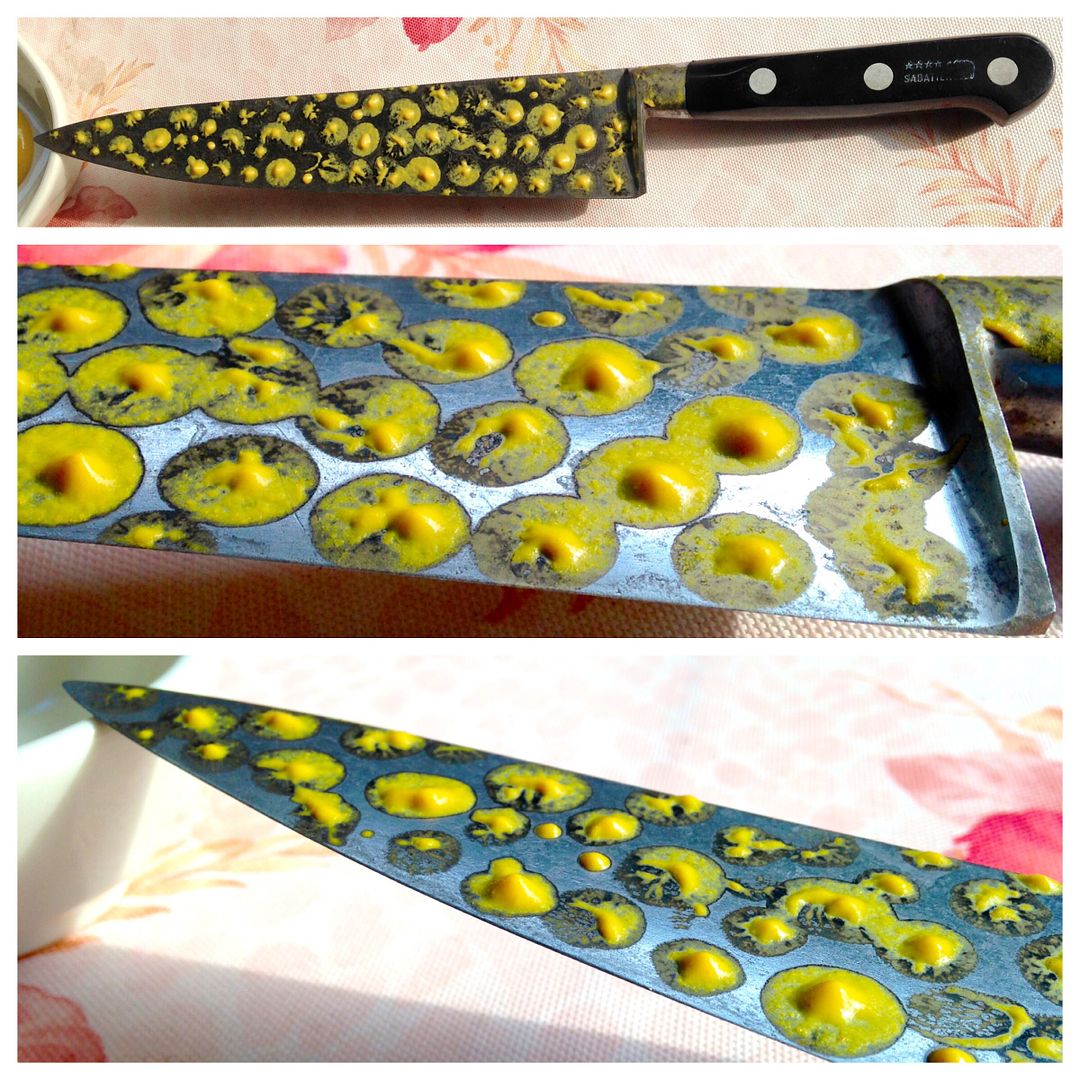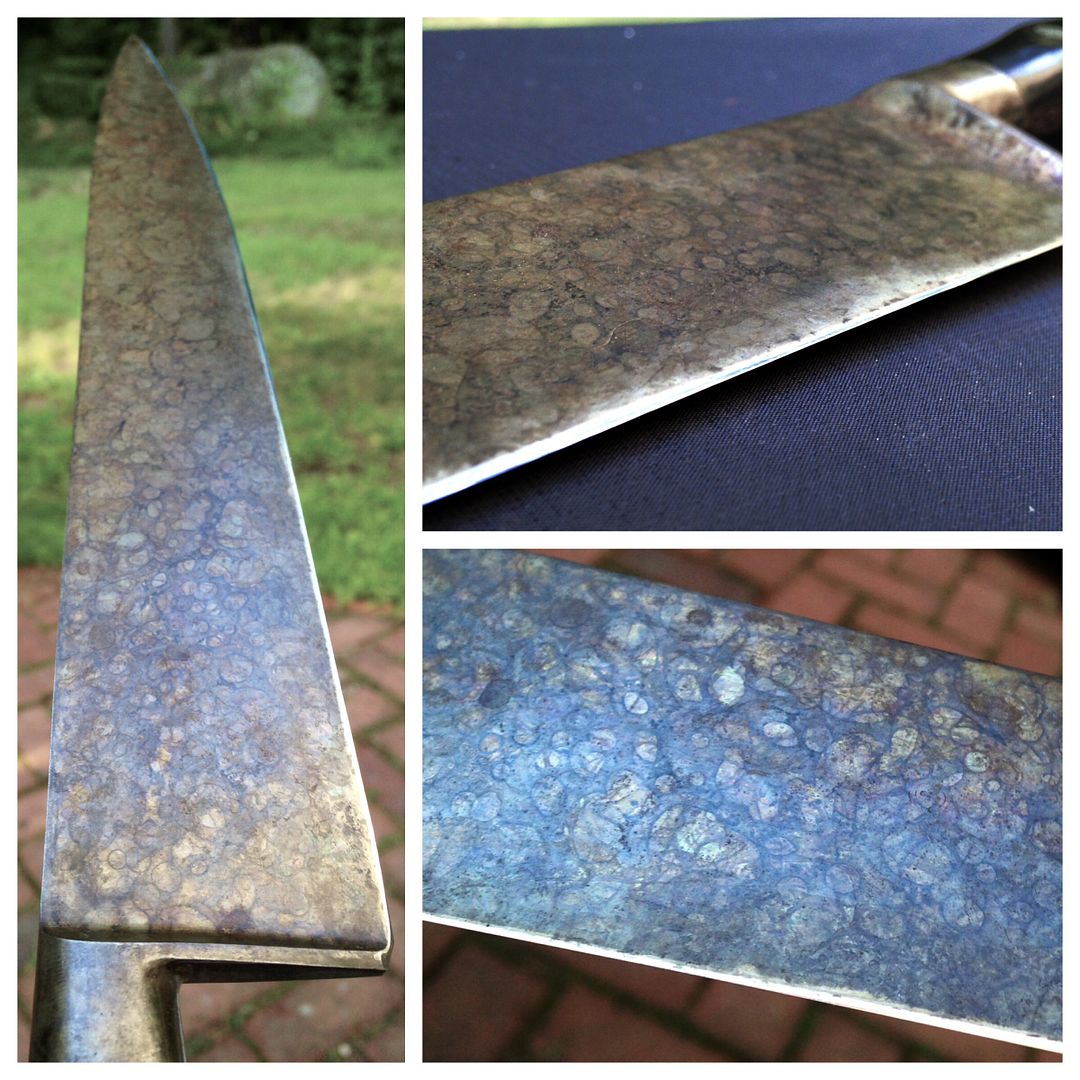Jerome D.
TVWBB All-Star
A few weeks ago, I met the family of my brother's girlfriend for the first time, and I instantly clicked with his girlfriend's dad. First and foremost, he's really into grilling and BBQ and owns a Weber Performer, so that in itself makes him cool in my book. After talking a bunch about BBQ, the conversation topic somehow switched over to kitchen knives. For those of you who don't know me, I'm a bit of a kitchen knife junkie -- I'm mostly into custom-made Japanese knives and hand-sharpening is a hobby of mine. So anyway, the dad showed me an old Sabatier carbon-steel chefs knife that had been sitting in his kitchen drawer, and it was in pretty rough shape, as shown in the first photo below. I told him I'd like to attempt to restore it, as I've always been fascinated by old Sabatier knives. He pretty much told me to have at it, so I took the old knife home with me. The photos below show the restoration process from start to finish. I really enjoyed working on this project, and today I gave the restored knife to my brother to give to his girlfriend's dad...I hope he likes the results. Thanks for checking out the photos!
The knife in its original state. Lots of rust, and dull as a butter knife.

Rust removal consisted of some sanding, followed by some Flitz metal polish. Even after rust removal, there was still considerable pitting in the metal.

Since carbon steel can be very reactive, I decided to "antique" the blade rather than try and make it look like a new knife. To do this, I created a "forced patina" where I dabbed on globs of plain yellow mustard onto the blade. The acid in the mustard reacts with the carbon steel, as shown by the dark rings forming around the mustard globs.

After several iterations of applying mustard and cleaning the blade, the knife ended up with a "multilayered" patina as shown below. Depending on what angle the blade is viewed from, the patina can look blue, gray, or even brownish -- a very cool visual effect. One other nice thing about having the "forced" patina is that it passivates the carbon steel's surface, making it less reactive during actual use in the kitchen, and also making it less susceptible to rusting. I sharpened the knife starting with a 1000 grit Japanese water-stone to reset the bevel, then worked my way up all the way to a 16,000 grit stone which leaves a mirror finish on the blade edge.

The final before-and-after comparison.

The knife in its original state. Lots of rust, and dull as a butter knife.

Rust removal consisted of some sanding, followed by some Flitz metal polish. Even after rust removal, there was still considerable pitting in the metal.

Since carbon steel can be very reactive, I decided to "antique" the blade rather than try and make it look like a new knife. To do this, I created a "forced patina" where I dabbed on globs of plain yellow mustard onto the blade. The acid in the mustard reacts with the carbon steel, as shown by the dark rings forming around the mustard globs.

After several iterations of applying mustard and cleaning the blade, the knife ended up with a "multilayered" patina as shown below. Depending on what angle the blade is viewed from, the patina can look blue, gray, or even brownish -- a very cool visual effect. One other nice thing about having the "forced" patina is that it passivates the carbon steel's surface, making it less reactive during actual use in the kitchen, and also making it less susceptible to rusting. I sharpened the knife starting with a 1000 grit Japanese water-stone to reset the bevel, then worked my way up all the way to a 16,000 grit stone which leaves a mirror finish on the blade edge.

The final before-and-after comparison.

